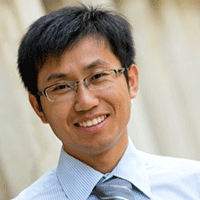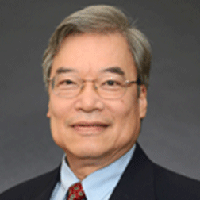Wave-Structure Interactions at Resonance: from Fundamentals to Industry Applications
Monday, June 10, 2024 / 17:15-18:15 / Room TBC
Wave-structure interactions are key to design of offshore infrastructure, from oil & gas platforms to rapidly growing renewable energy devices. The resonant responses of offshore structures are of particular interest, as they involve both hydrodynamic damping and nonlinear physics which present fundamental challenges. This talk will present some interesting underlying physics associated with wave-structure interactions, unravelled through innovative methodologies. Industry applications will be covered in this talk, to show how these fundamental studies have influenced the development of new design guidelines and engineering practices in the transition to clean energy solutions. Case studies will highlight collaborative efforts between academia and industry, featuring applications like floating wind, Side-by-Side Offloading for LNG or green hydrogen.

Dr Wenhua Zhao is an Associate Professor at the University of Western Australia. He earned his PhD at Shanghai Jiao Tong Uni in 2014, where he was honoured with a Best Thesis Award. His research focuses on offshore hydrodynamics, which has been disseminated in 100+ peer-reviewed papers spanning prestigious journals such as Journal of Fluid Mechanics, industry-focused conferences, and Masterclasses. Notably, his research is largely supported by Australian Research Council (ARC) and offshore industry ($30+ million). Wenhua’s research excellence is recognised by the prestigious Future Fellowship (2024-2028) in Marine Renewable Energy and DECRA Fellowship (2019-22), both funded by ARC. Further, he was elected as a By-Fellow at Cambridge University in 2020. Complementing to his research achievements, Dr Zhao has been serving as a Deputy Editor for the journal of Ocean Engineering, Associated Editor for the Journal of OMAE and Editorial Board Member for Applied Ocean Research.
Stokes Waves
Tuesday, June 11, 2024 / 17:15-18:15 / Room TBC
Stokes waves are commonly used as design waves in many ocean and coastal engineering applications. Information on free surface profile, wave celerity and velocity field are necessary for further analysing wave–structure interactions and other coastal processes. The development of Stokes wave solutions has a long history. Several analytical solutions for finite amplitude Stokes waves propagating in a constant depth have been presented in the literature. Using a perturbation method with the aid of MATLAB® Symbolic Toolbox, a new set of Stokes wave solutions, up to the fifth order, have been derived1. The new solutions are different from the existing solution2, starting at the third order. The causes for the differences have been identified and will be discussed in the lecture. The same perturbation method has been extended to find a new set of fifth-order Stokes wave solutions with the consideration of a linear shear current3. Again, the new solutions are different from the existing solutions starting at the third order4. The new solutions are checked with the experimental data, showing that the new solutions describe accurately the velocity distributions during wave propagation, especially in strong following currents and negative vorticity conditions. Finally, the lecture will present the guidelines for selecting appropriate analytical periodic water wave solutions for applications, based on two physical parameters, namely, frequency dispersion parameter (water depth divided by wavelength) and the nonlinearity parameter (wave height divided by wavelength). The guidelines are summarized in a graphic format in the two-parameters space5.
1 Zhao, K., Liu, P.L.-F., 2022. Proc. R. Soc. Lond. Ser. A Math. Phys. Eng. Sci. 478, 20210732. 2Fenton, J.D., 1985. J. Waterw. Port Coast. Ocean Eng. 111 (2), 216–234. 3Fang, H., Liu, P. L-F., Lian Tang, L., Lin, P. 2023. Proc. R. Soc. Lond. Ser. A Math. Phys. Eng. Sci. A 479, 20230565. 4Kishida N, Sobey R.J. 1988. J. Eng. Mech. 114, 1317–1334. 5Zhao, K., Wang , Y., Liu, P.L-F.. 2024. Coastal Engrg. 188,104432.

Dr. PHILIP L-F. LIU is currently the Class of 1912 Professor Emeritus in the School of Civil and Environmental Engineering (CEE) at the Cornell University. He is also Visiting Professors in the Department of CEE of the National University of Singapore (NUS) and in the Department of Hydraulic and Ocean Engineering of the National Cheng Kung University (Taiwan). Prof Liu's research interests are coastal engineering and oceanography with focuses on water wave mechanics, sediment transport, and modelling wave-current-structure interactions in coastal environment. Prof. Liu is a member of the National Academy of Engineering (USA), an Academician of Academia Sinica (Taiwan), a Fellow of the American Geophysical Union, and a Distinguished Member of the American Society of Civil Engineers. He received the ASCE Walter L. Huber Civil Engineering Research Prize (1978), the J. S. Guggenheim Fellowship (1980), the ASCE John G. Maffatt & Frank N. Nichol Harbor and Coastal Engineering Award (1997), the International Coastal Engineering Award ASCE (2004), the Alexander von Humboldt Research Award (2009), and the International Award for Enhancement of Tsunami/Coastal Disaster Resilience (2017). He was elected as a Distinguished Alumnus of National Taiwan University (2021).
Determining Crack Sizes in Welded Joints through A Digital Twin Approach
Wednesday, June 12, 2024 / 17:15-18:15 / Room TBC
Cyclic loadings caused by environmental actions often lead to fatigue crack initiation and propagations in the welded details of offshore structures. Accurate sizing of cracks in the critical welded details are essential to ensure the safe and sustainable operation, as well as to minimize the lifecycle cost of these structures. This lecture starts by examining the practical nondestructive testing techniques in measuring the crack sizes in the welded connections, e.g., the alternating current potential difference and the ultrasonic phased array. Using the nondestructive testing results as a benchmark, the lecture will present a physics-informed digital twin approach to determine the size of surface cracks with complex shapes in the welded connections. The digital twin represents a replica of the physical asset interfaced through sensor data. The digital twin approach deploys a machine learning algorithm and treats the crack sizing as a classification problem. The crack sizes estimated from the digital twin shows close agreement with the measured crack size in the physical specimens. This presentation will also touch on the application of the digital twin in a generic large-scale offshore structure.

Dr. QIAN Xudong is currently an Associate Professor in the Department of Civil and Environmental Engineering (CEE) at the National University of Singapore (NUS), Deputy Head of CEE at NUS, Group Head of the Structural and Offshore Engineering, Director for Centre for Offshore Research and Engineering (CORE), and Director for Centre for Advanced Materials and Structures (CAMS) NUS. Prof Qian’s research interest focuses on experimental fracture mechanics, data driven digital twins for welded structures, fracture, fatigue and integrity assessment for large-scale structures, welded connections, steel-concrete-steel composite structures, and polymer composite materials. Prof Qian is a member of the editorial board in a number of premier journals including Engineering Fracture Mechanics, Fatigue and Fracture of Engineering Materials and Structures, etc.